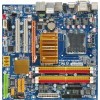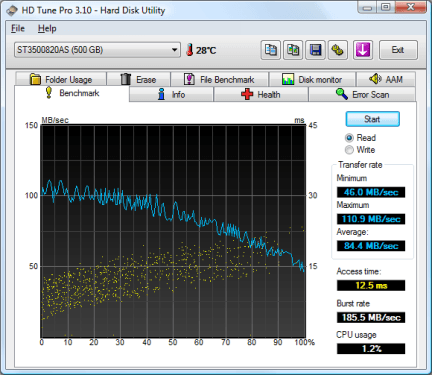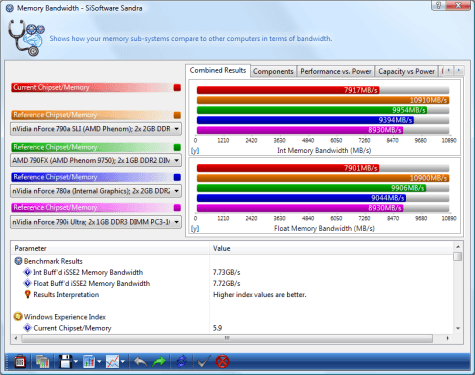- Qualcomm Launches Snapdragon 4 Gen 2 Mobile Platform
- AMD Launches Ryzen PRO 7000 Series Mobile & Desktop Platform
- Intel Launches Sleek Single-Slot Arc Pro A60 Workstation Graphics Card
- NVIDIA Announces Latest Ada Lovelace Additions: GeForce RTX 4060 Ti & RTX 4060
- Maxon Redshift With AMD Radeon GPU Rendering Support Now Available
Gigabyte EG45M-DS2H

On the test bench today, we have Gigabyte’s latest Micro ATX offering, the Intel G45-based EG45M-DS2H. This board carries the typical Gigabyte enthusiast charm, but also caters towards those looking to build a media center. But how does it stack up against the other Intel mATX boards we’ve tested recently?
Page 8 – Hardware: HD Tune Pro and Sandra 2009
Many of the results we see in real-world testing with real-world applications have technical root causes that can be exposed by hardware benchmarks, which measure performance metrics directly. The motherboard you choose is likely to have a significant effect on storage and memory performance, so numbers like these can provide important comparisons of performance in absolute terms. HD Tune Pro 3.01
To test the storage I/O, we use a tool that we’ve been using for a number of years, HD Tune. The developer released a “Pro” version not long ago, so that’s what we are using for all of our storage-related benchmarking. To avoid potential latency, the drive is tested once Vista is idle for at least five minutes, and CPU usage remains stable at >1%.

The results of this test aren’t too surprising, considering that all three motherboards being compared have essentially the same storage controller. The three boards are almost dead even, within a reasonable margin of error.
SiSoftware Sandra 2009
Yet another classic tool from our toolbox, SiSoftware’s Sandra is one of the ultimate benchmarking sidekicks around, allowing us to test almost every-single component in our PC, from CPU to GPU to memory to storage. In the case of our motherboard reviews, we stick with the memory bandwidth and latency tests, since its an area where some differences could very-well be seen.
As mentioned above, the results here don’t represent real-world performance, and if one motherboard sees the memory 4ns slower, the chances of you noticing the hit in real usage is highly unlikely, if not impossible. If any scenario would be effected, it would be processes that last the course of a few hours, not a few minutes.


These results tell a fairly disturbing tale. Both G45-based motherboards in this test suffer from triple-digit memory latency, and turn in bandwidth numbers that are at least two-tenths off from the G35-based board’s performance. However, the Gigabyte EG45M-DS2H adds 10ms of memory latency and drops an additional tenth in bandwidth when compared to the Intel DG45ID motherboard. This alone could explain why, in our application testing, the Gigabyte board brought up the rear. But there’s something else to mention…


To show the effect that the G45’s onboard IGP may be having on the Gigabyte board’s memory performance, I tested the board’s memory performance with a discrete GPU installed, in this case our reference NVIDIA GeForce 9600GT. Here, we can see the sizeable claim that the G45’s onboard GMA X4500HD graphics processor is making on the overall system memory bandwidth.
IGPs rely on the system RAM for their frame buffer, which can detract from the memory bandwidth that’s available to the CPU, which is what we’re measuring here. With the IGP out of the picture, the EG45M-DS2H is almost competitive with the performance of the G35-based ASUS board in our last comparison.
Next, let’s check out the EG45M’s performance under some gaming tests.
Support our efforts! With ad revenue at an all-time low for written websites, we're relying more than ever on reader support to help us continue putting so much effort into this type of content. You can support us by becoming a Patron, or by using our Amazon shopping affiliate links listed through our articles. Thanks for your support!






